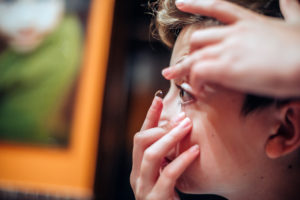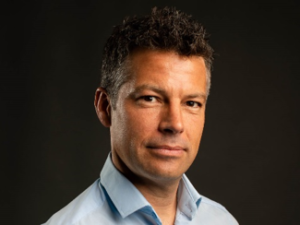August 16, 2021
By Tom Griffiths, Managing Director, Scotlens
Call them “OrthoK” and it’s immediately a specialist lens. Call them a “night lens” and it’s no longer a specialist lens. It’s a mainstream lens that is opposite to daytime lenses.
 Nobody discusses their photorefractive keratectomy over coffee with friends. Their Facebook chatter never asks whether to have Laser-Assisted In Situ Keratomileusis. They simply talk about laser eye surgery. Do they know how it works? Not at all, but they know the difference it will make to their lives despite the risks they openly discuss on social forums. Agreed phraseology over social media and effective communication between patients and the industry has helped create a global “laser eye surgery” industry worth in excess of $3.5 billion.
Nobody discusses their photorefractive keratectomy over coffee with friends. Their Facebook chatter never asks whether to have Laser-Assisted In Situ Keratomileusis. They simply talk about laser eye surgery. Do they know how it works? Not at all, but they know the difference it will make to their lives despite the risks they openly discuss on social forums. Agreed phraseology over social media and effective communication between patients and the industry has helped create a global “laser eye surgery” industry worth in excess of $3.5 billion.
‘Sounds Too Good to Be True’ Contact Lenses
A few years ago, a seemingly magic contact lens that would give my nearsighted teenage son 20/20 vision during the day without the need for glasses or contact lenses was recommended. It was called OrthoK, short for orthokeratology, a big medical term that is both hard to say and to remember, two of the biggest “no no’s” in marketing. Written down it read as “Or” “Thok.” Only those in the know pronounce OrthoK as “Ortho” “K.” Still, not only did it sound too good to be true, but it also sounded like a complex clunky specialist medical device for kids with serious problems. However, we trusted our optometrist, and it was the best thing we ever did.
My son’s eyesight was losing one diopter per year. By the time he got into night lenses at age 13, he was -3.75D and -4.00D. Night lenses changed his life. Before them, he went from a happy, confident, sports-mad, 10-year-old kid to a lost soul at a big school who gave up sports, lost confidence, sat at the front of the class, and broke our hearts. Now, aged 16 years and with night lenses, he’s happy, confident, and an accomplished surfer (a sport that was impossible for him when he couldn’t see the waves). Best of all, his myopia has stabilized, and he now has a lower risk of eye disease later on in life as a result.
We Call Them Night Lenses
Back to the point. He naturally calls them night lenses. We, as parents, naturally describe them as night lenses to others. Call them “OrthoK” and it’s immediately a specialist lens. Call them a “night lens” and it’s no longer a specialist lens. It’s a mainstream lens that is opposite to daytime lenses. I asked optometrists about this, and they agree: “Yes, people colloquially call them night lenses.” Yet the industry keeps calling them OrthoK or by their brand names. The result is mass confusion and extremely low interest-to-conversion.
Time to Sell the Sizzle
Unlike laser surgery, where they sell the sizzle, not the sausage … we’re still selling the sausage, attaching unnecessary importance to the “special” lens and trying to teach the ABCs of orthokeratology to people who, quite frankly, don’t care. It sells itself if we don’t get in the way of it.
There’s an amazing secret hidden in plain sight: Put simply, my 16-year-old son walks around with normal, clear vision, no need for glasses or contact lenses during the day, and people can’t believe it. I asked my son if he would ever go back into glasses. His reply? “No chance!”
Put yourself in the shoes of teenagers who only know night lenses, who only know putting a lens in at night and taking it out in the morning, a routine like brushing their teeth. Knowing normal, clear sight during the day without the need for glasses or day lenses, he’ll likely wear night lenses for the rest of his life as naturally as people wear day lenses all their lives.
The Global OrthoK Market is About to Explode
The global OrthoK night lenses market currently accounts for 1.2% of all contact lens fits, according to one study.1 That sounds a bit high to many. However, as we head toward the well-publicized 50% global myopia by 2050, massive populations such as China with high percentages of myopia are already seeing growth rates in OrthoK that indicate a rising trend with significant value. Calling them “night lenses” will only serve to encourage that trend.

Tom Griffiths has recently joined Scotlens | Custom Fit Contact Lenses as a partner in the Managing Director role. Economist, creative, innovator, and Sunday Times Top 100 Entrepreneur & Disruptor, Griffiths was the founder of gapyear.com, a very early social network. Scotlens makes a night lens device called the NOCTURNAL™ lens.
References
1 Morgan, P. B., Efron, N., Woods, C.A., Santodomingo-Rubido, J. (2019). International survey of orthokeratology contact lens fitting. Contact Lens and Anterior Eye, 42(4), 450-454.













